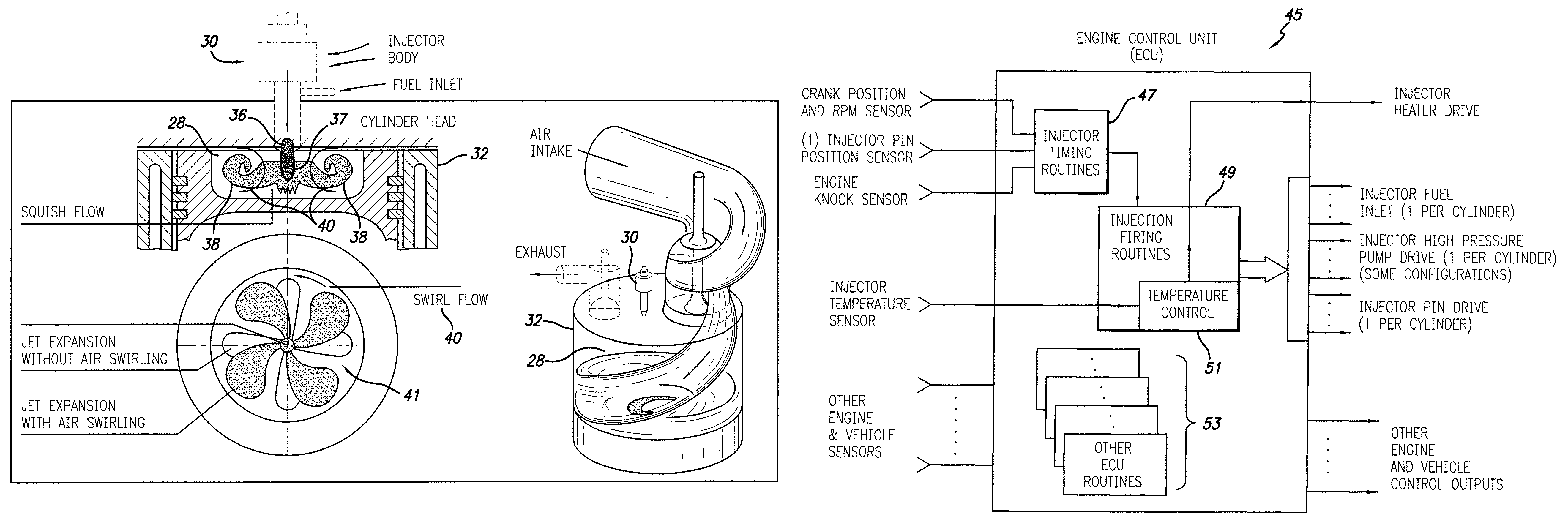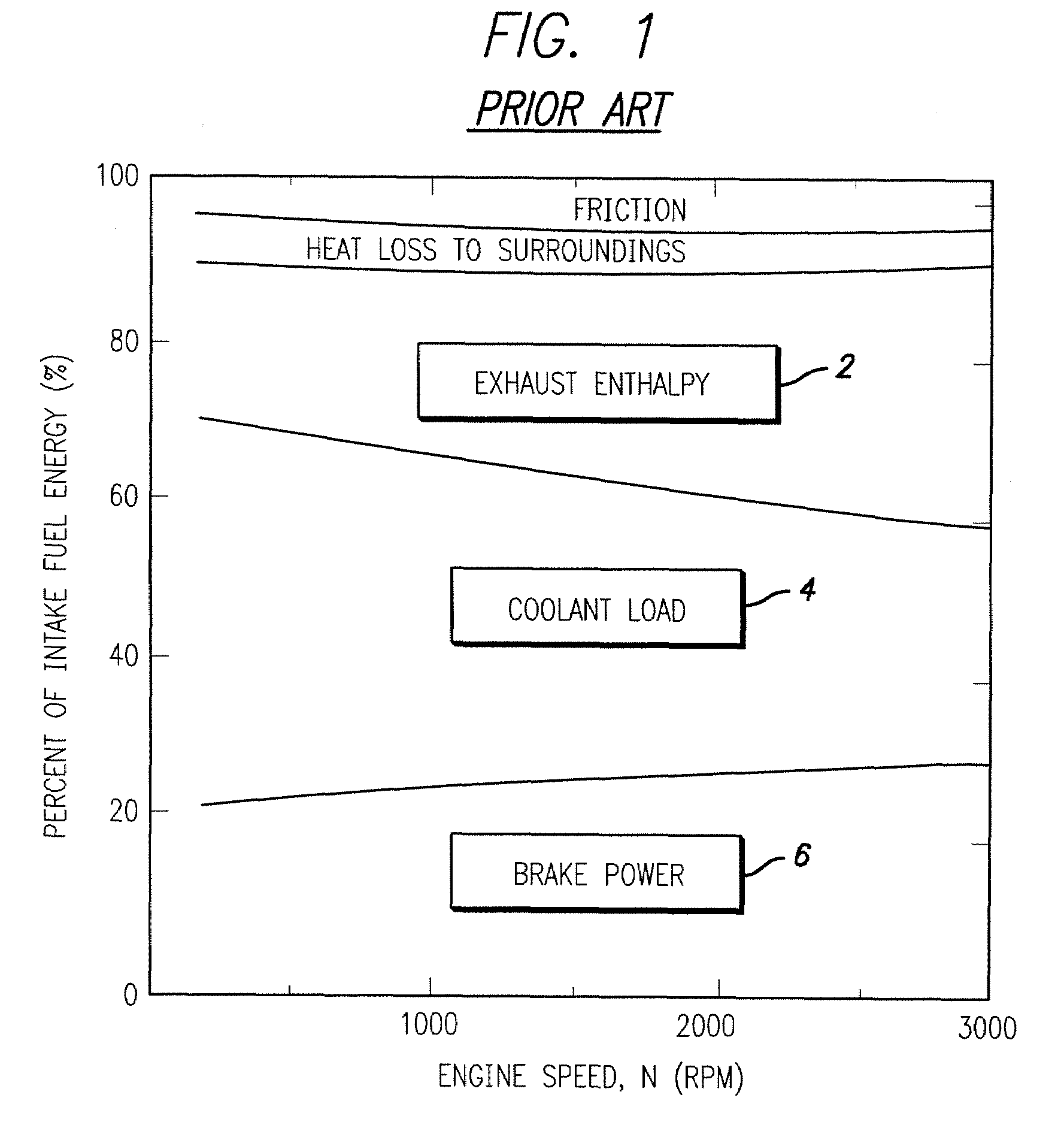Fuel injector having algorithm controlled look-ahead timing for injector-ignition operation
a fuel injector and algorithm control technology, applied in the direction of electric control, combustion air/fuel air treatment, instruments, etc., can solve the problems of injectors firing at room pressure, up to the practical compression limit of internal combustion engines, etc., to increase the fuel heating exposure time, reduce waste heat, and accelerate burn ignition
- Summary
- Abstract
- Description
- Claims
- Application Information
AI Technical Summary
Benefits of technology
Problems solved by technology
Method used
Image
Examples
Embodiment Construction
[0031]In the following paragraphs, the present invention will be described in detail by way of example with reference to the attached drawings. Throughout this description, the preferred embodiment and examples shown should be considered as exemplars, rather than as limitations on the present invention. As used herein, the “present invention” refers to any one of the embodiments of the invention described herein, and any equivalents. Furthermore, reference to various feature(s) of the “present invention” throughout this document does not mean that all claimed embodiments or methods must include the referenced feature(s).
[0032]In accordance with the principles of the present invention, an injector-ignition fuel injection system for an internal combustion engine is provided, the system comprising an engine control unit (ECU) controlling a heated catalyzed fuel injector for heating and catalyzing a next fuel charge, wherein the ECU uses a one firing cycle look-ahead algorithm for contr...
PUM
 Login to View More
Login to View More Abstract
Description
Claims
Application Information
 Login to View More
Login to View More - R&D
- Intellectual Property
- Life Sciences
- Materials
- Tech Scout
- Unparalleled Data Quality
- Higher Quality Content
- 60% Fewer Hallucinations
Browse by: Latest US Patents, China's latest patents, Technical Efficacy Thesaurus, Application Domain, Technology Topic, Popular Technical Reports.
© 2025 PatSnap. All rights reserved.Legal|Privacy policy|Modern Slavery Act Transparency Statement|Sitemap|About US| Contact US: help@patsnap.com



